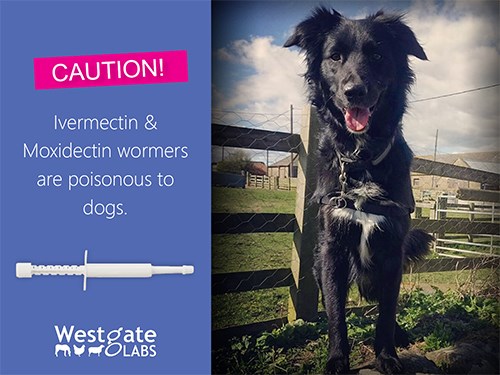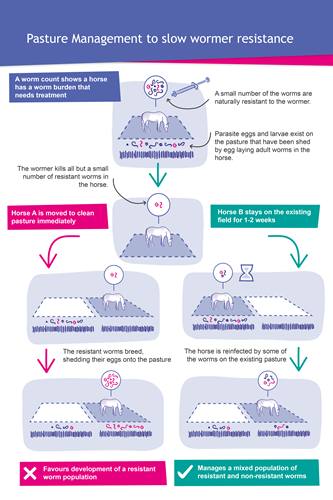How should I manage my horse after worming?

 Here at Westgate Labs we get lots of queries from people unsure about what do with their horses after worming. Stable them, but how long for? Put them back in the same field? Or move them straight to clean fresh grazing? There are a couple of considerations to take into account and the preferred course of action might just surprise you!
Here at Westgate Labs we get lots of queries from people unsure about what do with their horses after worming. Stable them, but how long for? Put them back in the same field? Or move them straight to clean fresh grazing? There are a couple of considerations to take into account and the preferred course of action might just surprise you!
The reasons to manage horses carefully after worming are two fold – most obviously to optimise parasite control for your horse and to help slow down wormer resistance, but also to minimise the effect of the strong chemicals in the environment.
Immediately after worming
All worming drugs are essentially poisons, most are dangerous to aquatic life and all will have a negative effect on dung beetles and other microorganisms. To prevent contamination bring the horse onto a surfaced area to administer the wormer, that can be easily cleaned if necessary - rather than worm him in the field. Dispose of packaging carefully, preferably in a bin with a lid.
Be especially careful when using Ivermectin which is toxic to dogs and particularly is not well tolerated by Collies, Old English Sheep Dogs and their related breeds and crosses.

The next 24-48hrs
Many of the data sheets for wormers, notably those that contain praziquantel, ivermectin or moxidectin, advise stabling for two – three days after worming. The data sheet for Equest Pramox says: “In order to limit the impact of moxidectin on dung fauna and due to insufficient data regarding environmental risk of praziquantel horses should not be turned out onto pasture within three days of treatment.”
Be especially careful of this advice if horses are grazing fields with ponds, streams and ditches to prevent the chemicals getting into water courses. If stabling is impossible then aim to worm when the weather is dry to stop chemicals being washed into the soil and poo pick as thoroughly as you can.
It’s unusual but not unheard of to actually see worms passed in the horses droppings. Any that are shed after worming can’t survive outside the body and are not a reinfection threat to horses grazing the pasture.
If you're targeting redworm or ascarids don’t worm and move!
It’s now thought that moving the horse to clean pasture immediately after worming is a way to favour the development of a resistant worm population. If a horse is wormed and then moved immediately only the resistant worm strains will survive and go on to reproduce, greatly speeding up the resistance problem on the land.
Instead after worming the horses should go back onto the original pasture, diluting the population of resistant worms with those still susceptible to the drug. This goes against all we were taught in the past and feel wrong, but it will help to slow down worm resistance on your fields.

Targeting for tapeworm
The advice to keep horses off the fields for 24-48hrs after worming is especially important if you're targeting tapeworm. This is because the tapeworm segments that are shed after treatment are full of eggs and these burst in the dung releasing fresh potential for infection which you don't want on the pasture if you can help it. If stabling is impossible then creating a smaller temporary paddock, that you can poo pick really thoroughly, will help.
Good Management
The aim should be to give our horses as few wormers as possible. Using worm egg counts and other diagnostic tools to reduce the frequency of chemical doses will protect our environment and prolong the life of our drugs. Aim to break the lifecycle of the worms by mechanical means such as poo picking, cross grazing or harrowing (in dry, sunny weather) rather than relying on regular chemical intervention.
Dung Beetles
Dung Beetles are great for pasture but populations are struggling as wormers are highly toxic to them
> Find out more about dung beetles and how to protect them
Do you have questions about worming your horse? We recognise it's sometimes a subject you need backup with. All our tests include FREE friendly SQP advice if you need it, available by phone, email or Facebook message.